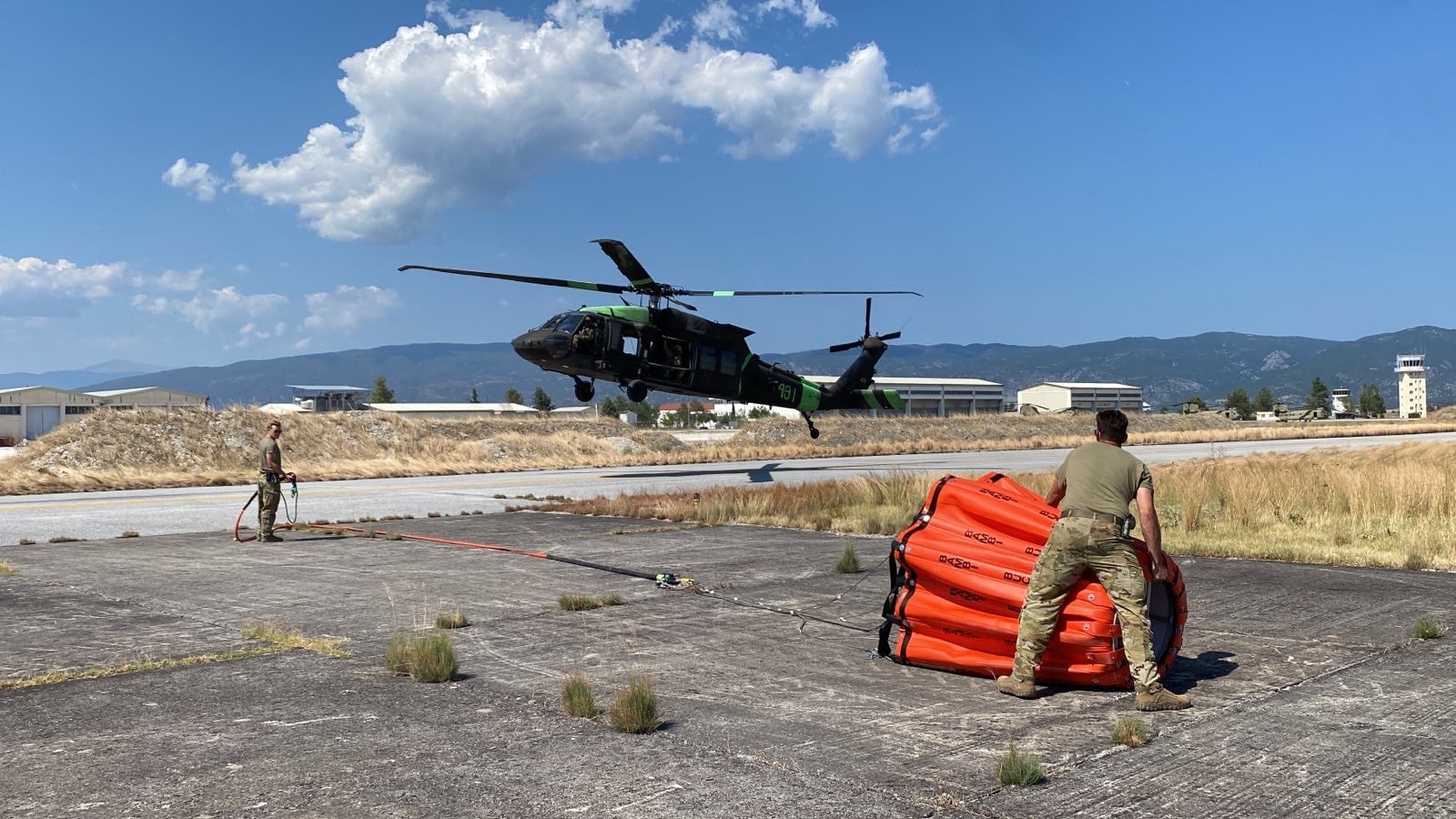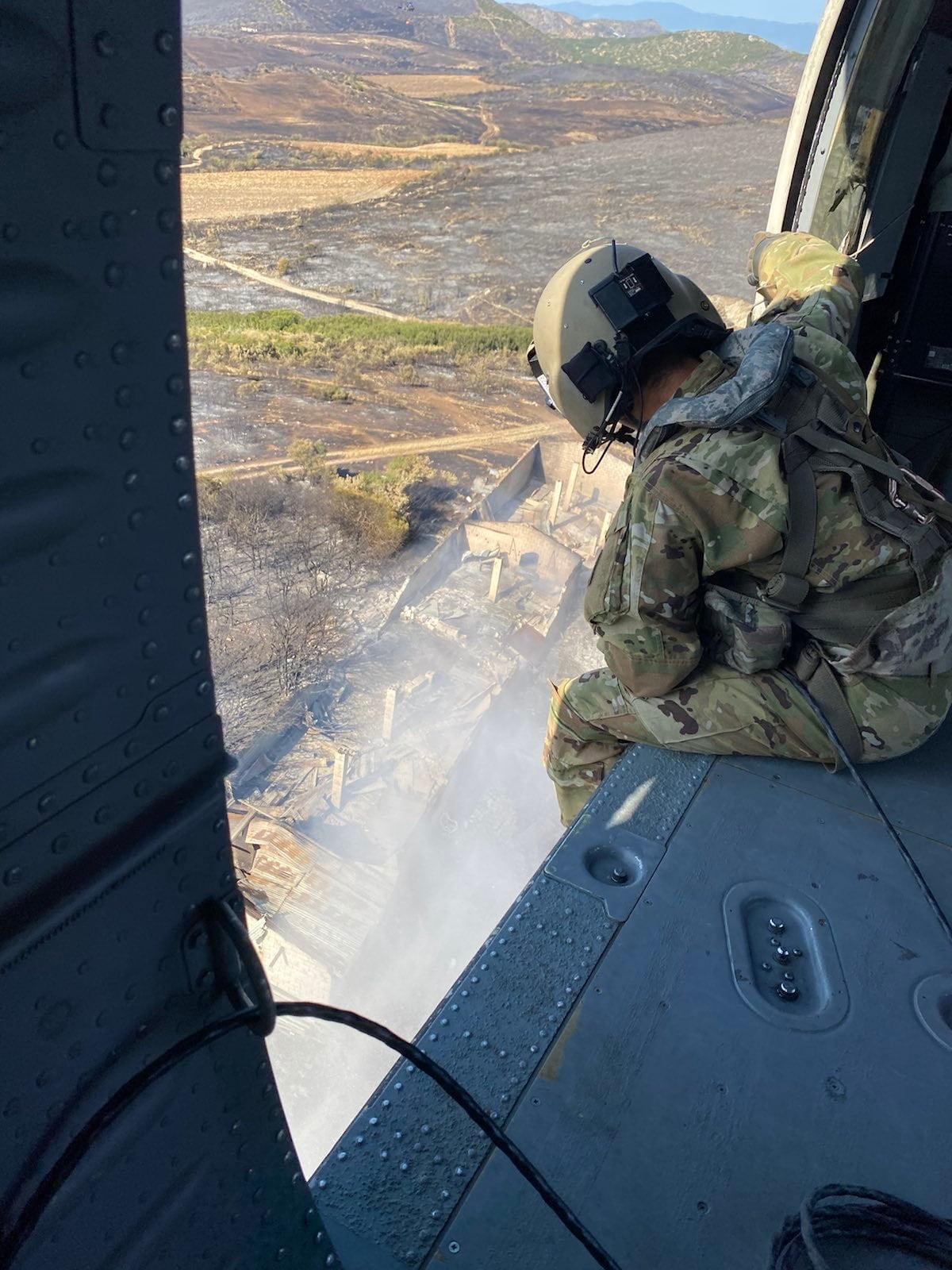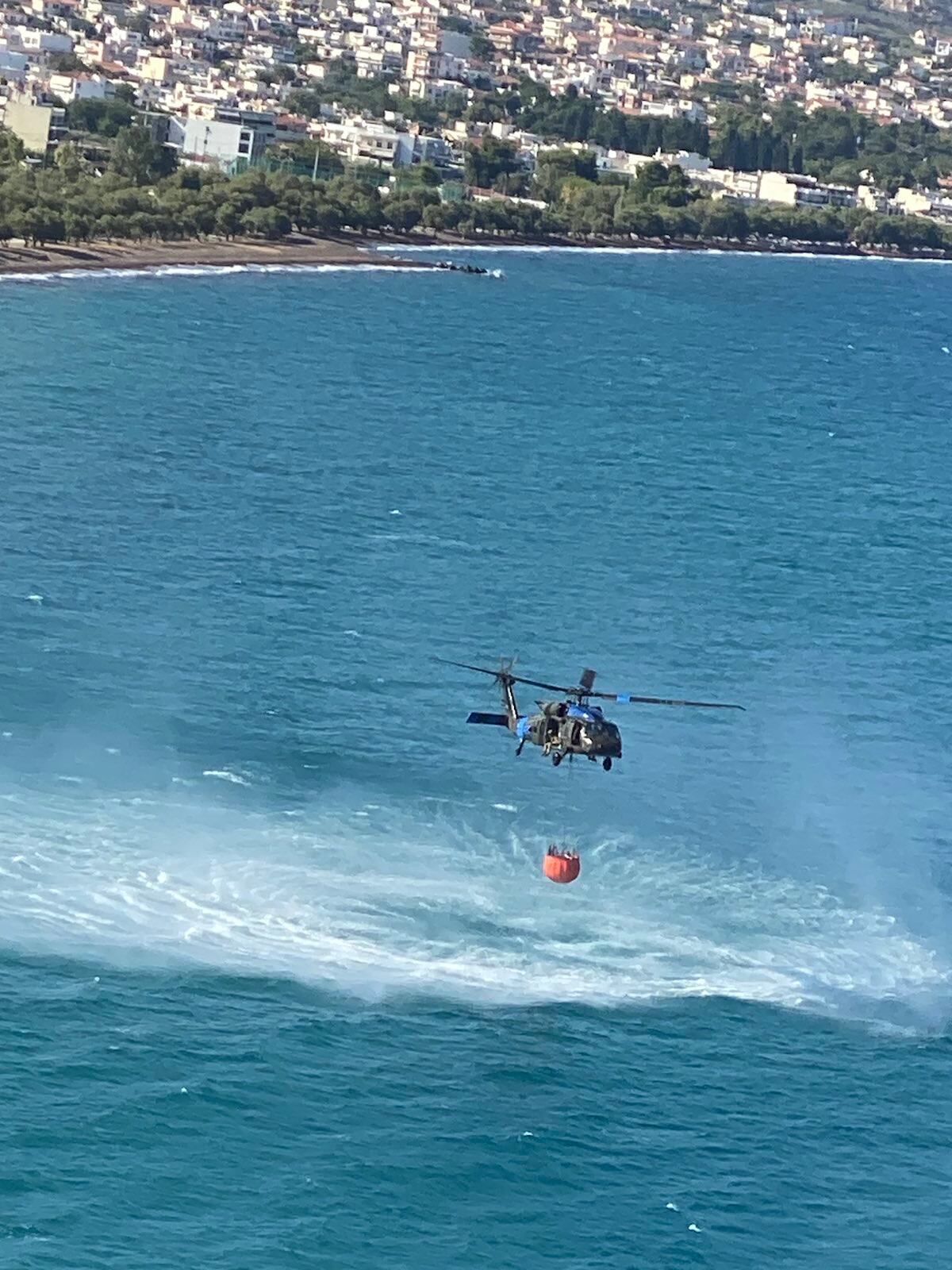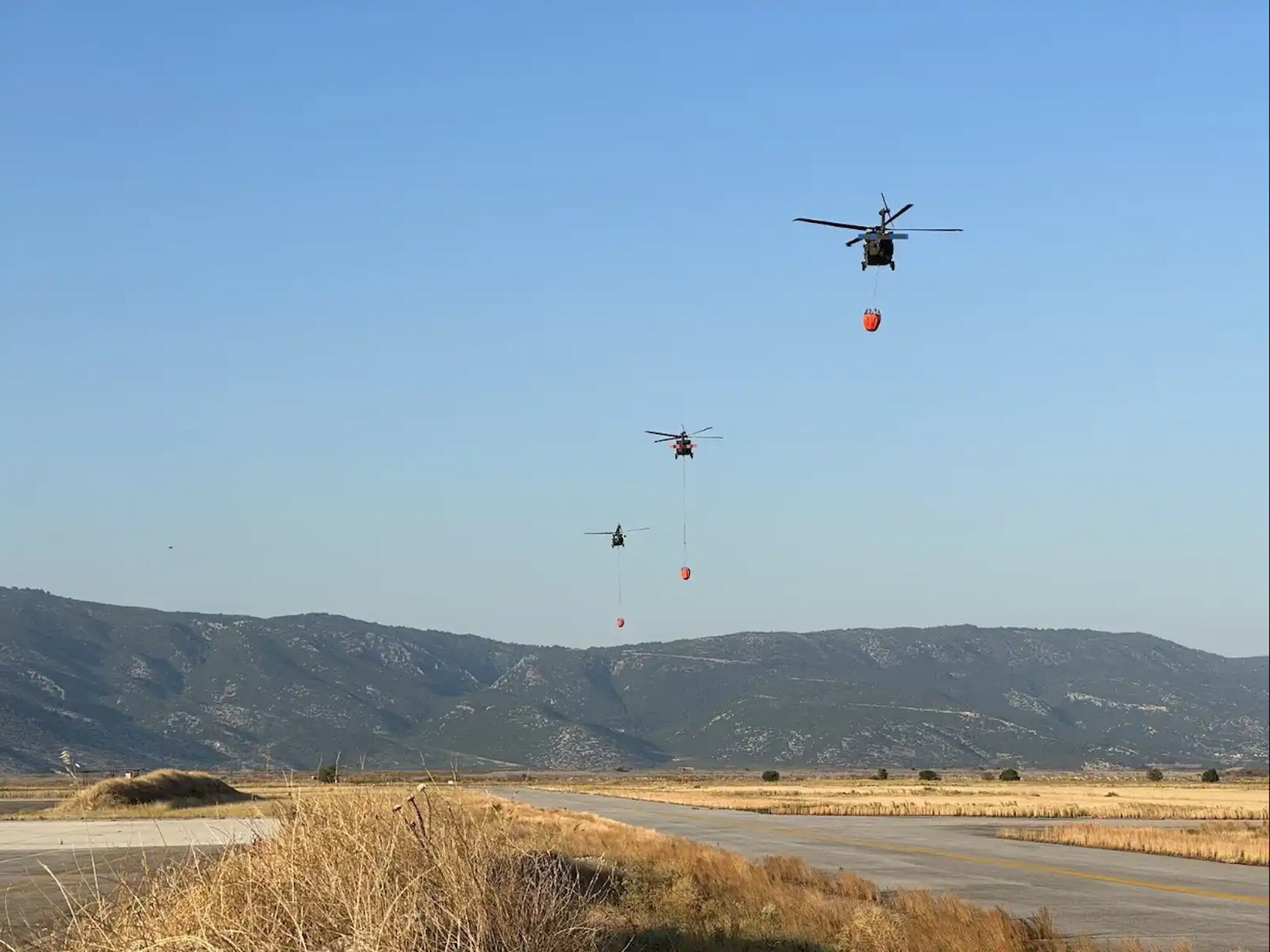When 1st Lt. Matthew Blejwas graduated from the Army’s flight school in May, he knew he’d deploy to Europe almost immediately after he pinned his aviator’s wings.
But the 24-year-old UH-60 Black Hawk pilot didn’t know that scarcely two months later, he and others from the 3rd Infantry Division’s Combat Aviation Brigade — Marne Air — would find themselves in Greece as part of a multinational mission battling the largest wildfires ever recorded in the European Union.
Army Times spoke with Blejwas and two of his colleagues — pilot Chief Warrant Officer 3 Michael Casey and crew chief Sgt. Jordan McLellan — Tuesday morning as they neared the end of a workday as part of their Atlantic Resolve deployment. Their division headquarters currently oversees the northern portion of the long-running deterrence mission that sharply increased in size after Russia’s full-scale invasion of Ukraine, though Marne Air is operating out of the southern headquarters, led by the 10th Mountain Division staff, in Romania.

The three soldiers were wrapping up a joint training exercise with the Greek military in June 2023 when they learned they would stay and fight fires instead of heading back to Romania.
“We were down there doing some high-altitude [flying] training and some air assaults,” alongside Greek pilots and special operations personnel, said Casey, who saw two combat deployments as an enlisted paratrooper stationed in Alaska before becoming a pilot in 2013. The warrant officer “had actually redeployed to Romania” as one of the unit’s first crews to depart the training — so when they got the call, Casey’s crew loaded the unit’s firefighting buckets and gear and immediately flew back across the Aegean Sea to a Hellenic Air Force base near Volos.
The pilots characterized the flying as technically difficult but rewarding. The water buckets, which McLellan said were filled with ocean water, weighed around 6,000 pounds and dangled about 30 feet below the helicopter. The swaying buckets are impacted by the wind.
Complicating matters further, the pilots were unable to see the buckets below the aircraft, meaning that crew chiefs like McLellan were telling the pilots where to go and what adjustments to make before he would release the water.

“It was...really disconcerting at first being in the front and not being able to see what’s under the helicopter,” confessed Blejwas, a Rochester, New York native. “You’re completely relying on the crew chiefs in the back. It’s a really cool team effort when done right.”
McLellan, by contrast, said the role reversal “was a great experience” and also “a lot of stress.” He described the wind — which would blow the falling water in addition to swaying the buckets — as the primary obstacle to ensuring their water drops hit the specific spots that local firefighters radioed to them through a Greek liaison aboard the helicopter.
Casey, who hails from Raleigh, was dispatched to fight a fire on the distant island of Chios that reportedly began after a traffic accident. His crew simultaneously battled the flames alongside roughly seven helicopters from other countries.
“The amount of professionalism in the air at the time and how everyone just kind of understood the flow of traffic was really impressive,” Casey said.

The warrant officer identified the firefighting experience as a high point of the deployment that underscores the changes he’s seen in Europe since his first Atlantic Resolve deployment in 2017.
“I didn’t train with a lot of NATO partners back then. It was a lot of [training] rotations,” he said. “This time — it’s a very stark difference. I’ve trained with the Greeks, Bosnians, Romanians, Bulgarians [and Italians]...it’s a lot more rewarding, fulfilling now.”
Davis Winkie covers the Army for Military Times. He studied history at Vanderbilt and UNC-Chapel Hill, and served five years in the Army Guard. His investigations earned the Society of Professional Journalists' 2023 Sunshine Award and consecutive Military Reporters and Editors honors, among others. Davis was also a 2022 Livingston Awards finalist.




